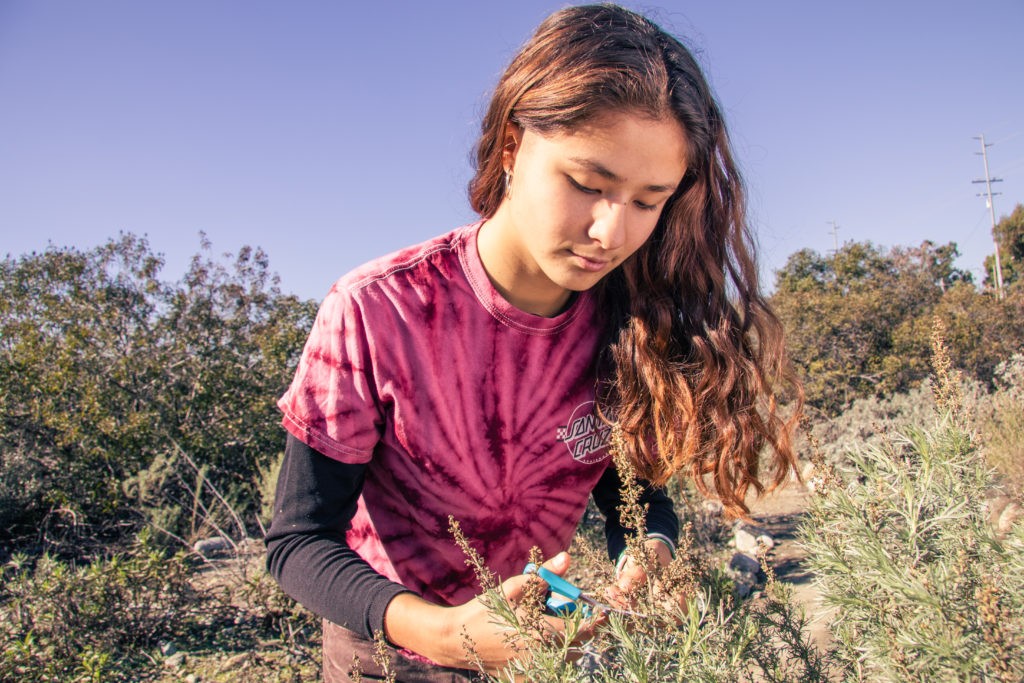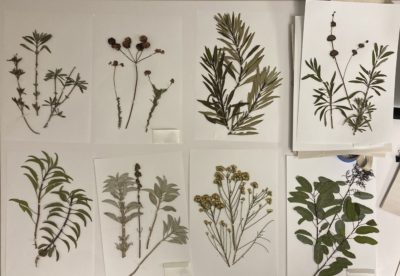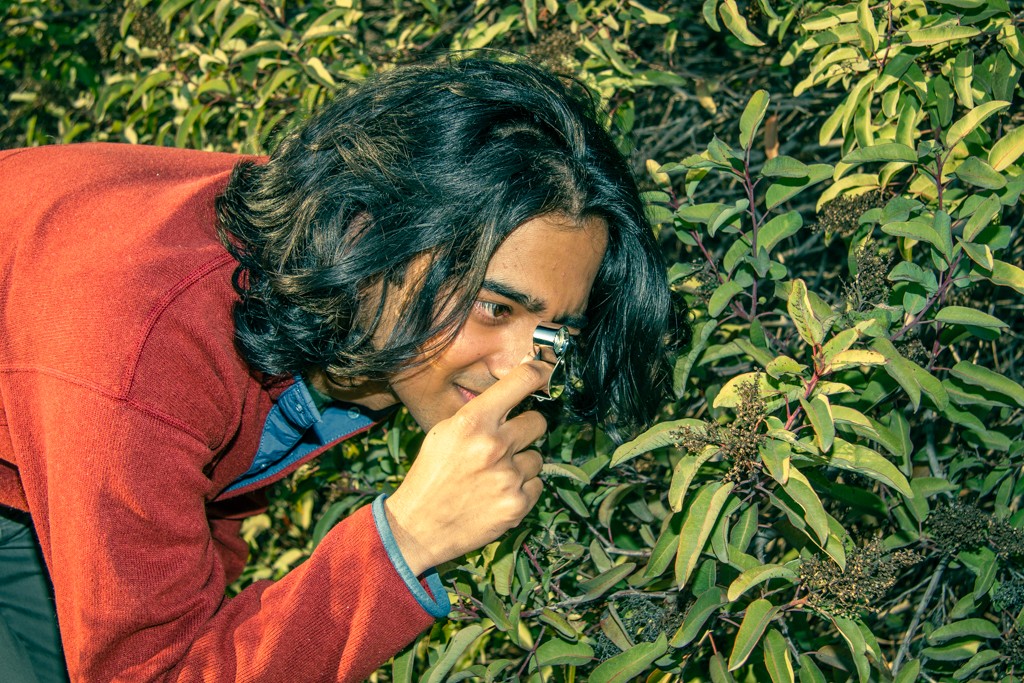Two students collaborate with the California Botanic Garden and Pitzer’s Robert Redford Conservancy to preserve the Outback’s rare ecological habitat
 Zoë Wong-VanHaren ’25 at work in the Outback.
Zoë Wong-VanHaren ’25 at work in the Outback.
What did Claremont look like 100 years ago? One parcel on Pitzer College’s campus gives us a glimpse: the Outback Preserve. Home to alluvial sage scrub—one of the rarest ecosystems in the world—the Outback is a 3.4-acre living-learning laboratory for students to engage in hands-on science with California’s indigenous plants.
Pitzer students and environmental analysis majors Tommy Shenoi ’24 and Zoë Wong-VanHaren ’25 have made the Outback a passion in action. After taking Professor Emeritus Paul Faulstich’s Restoring Nature class in the Outback in spring 2022, Shenoi and Wong-VanHaren were inspired to create an independent study to establish a seed collection for the Outback.
“We have developed an appreciation for the Outback, its microclimates and seasons of growth, and the incredible amount of knowledge about seeds and restoration ecology,” said Shenoi.
By creating a seed bank, Shenoi and Wong-VanHaren are preserving the genetic material of plants and aiding in future restoration projects. They are also working on a floristic inventory and herbarium specimen vouchers (pressed plant samples).
 Pressed and mounted plant specimens collected from the Outback
Pressed and mounted plant specimens collected from the Outback
“The Outback is one of the last pieces of native coastal sage scrub habitat on Pitzer’s campus,” said Wong-VanHaren. “We have to keep the natural history.”
Shenoi and Wong-VanHaren are collaborating with Seed Conservation Program Manager Cheryl Birker at the California Botanic Garden (CalBG), which “houses the largest seed bank dedicated to the long-term conservation of California’s native flora” according to the garden’s website. (CalBG is also home to the Botany Department of nearby Claremont Graduate University.) The students have used Birker’s lab to process and prepare seeds from the Outback for storage at the botanic garden.
Professor of Environmental Analysis and Director of Pitzer’s Robert Redford Conservancy Susan A. Phillips is the academic adviser for the independent study and hopes to establish a continuing partnership between the Conservancy and the California Botanic Garden. Phillips provided funding through the Conservancy for Shenoi and Wong-VanHaren and allowed her students to forge their own path for the project.
“It’s been fascinating to learn something experientially rather than theoretically,” said Wong-VanHaren.
Shenoi agreed, explaining: “We are doing hands-on work and learning from something that isn’t necessarily incorporated into the classroom. We are using our senses and learning more outside than inside.”
 Tommy Shenoi ’24 observes a plant in the Outback.
Tommy Shenoi ’24 observes a plant in the Outback.
Shenoi is using Geographic Information Systems to build on a map of Pitzer’s trees (created by alumnus Joey Sulpizio ’22) and broaden the data to include all flora in the Outback “to inform maintenance decisions and water and resource allocation.”
Shenoi and Wong-VanHaren are partnering with the Outback Club and Professor Monica Mahoney, an adjunct faculty member taking over the Restoring Nature class this spring, to ensure the Outback’s continued care.
For Wong-VanHaren, this project can be tied to all of Pitzer’s core values, especially interdisciplinary learning.
“We are learning a range of subjects, from the importance of certain plants to Tongva people to the scientific names for the different parts of seeds,” said Wong-VanHaren. “Also, students have the social responsibility of making sure that the land continues to be here. The Outback is needed for the newer dorms to be LEED certified.”
Shenoi and Wong-VanHaren appreciated the opportunity to chart their academic course with Phillips’ support. Shenoi, who is pursuing a self-designed major in food and agricultural studies in addition to environmental analysis, plans to engage in an independent study about culinary hyperlocalism and pasta-making, using ingredients local to Southern California.
“Independent studies can personalize your studies if you find a professor who can support you in a topic that they know well,” said Wong-VanHaren.
“It’s also more intimate,” said Shenoi. “We got to work one-on-one with our adviser and partners.”
In many ways, this independent study continues the project Shenoi launched in the summer as a Hive fellow when he utilized human-centered design to help Claremont students connect to their environment and local plants. Shenoi continues to live out his love for botany and sustainability in the Outback.
“In our time of climate change and natural habitat loss, preserving these spaces is vital to protecting our keystone species, improving the health of our communities, and connecting to our local ecosystems,” said Shenoi.